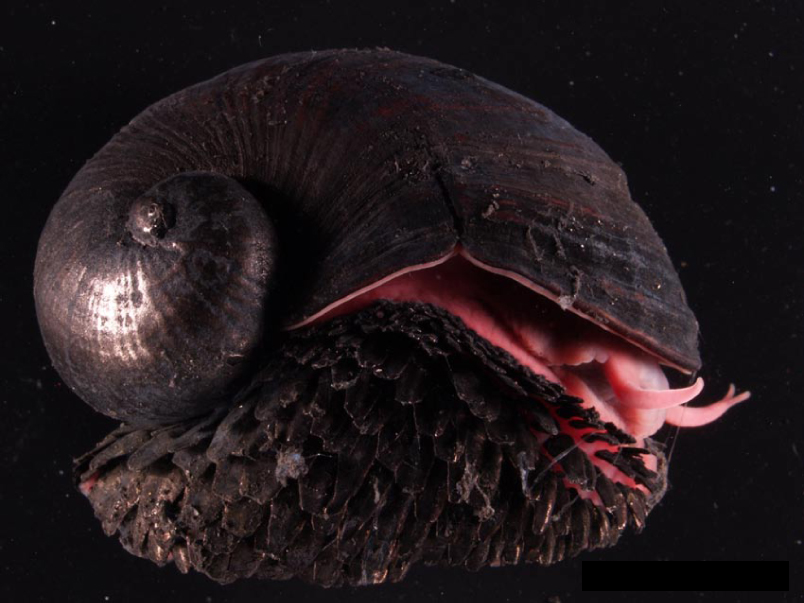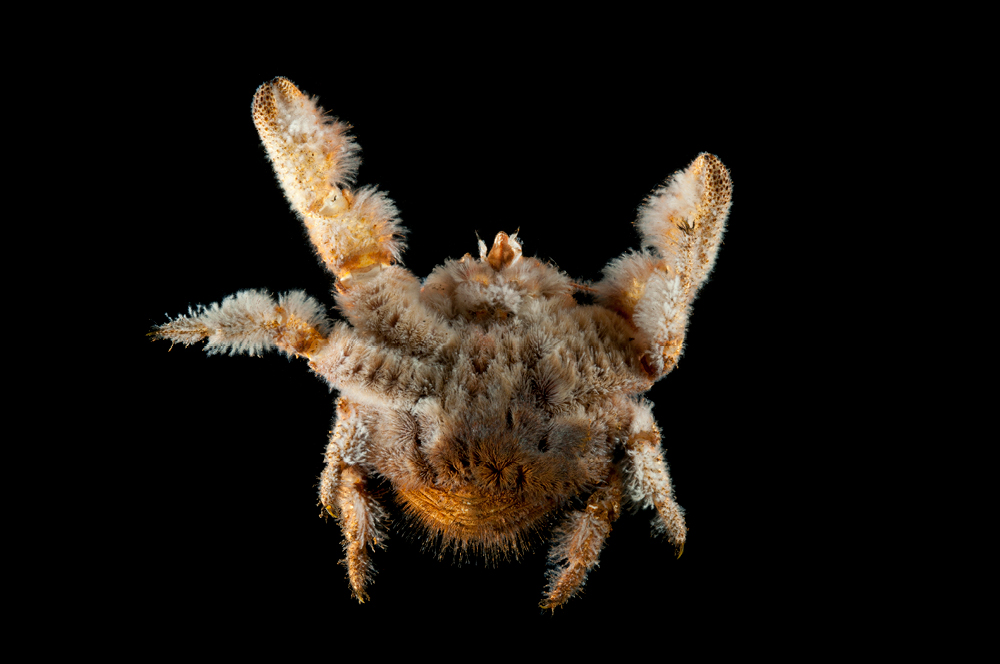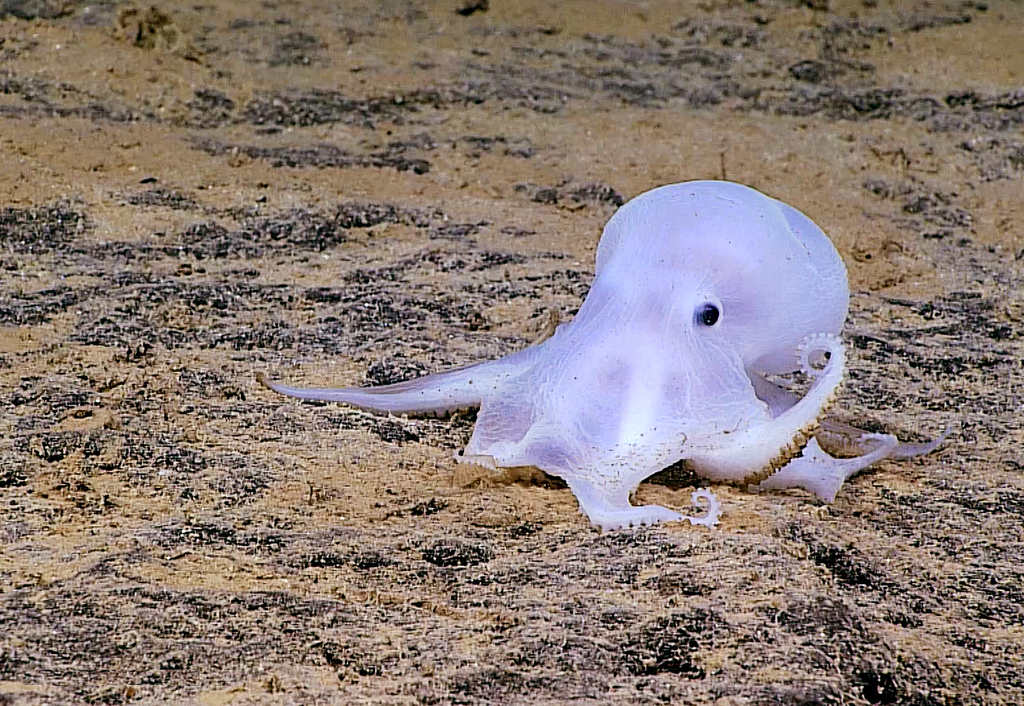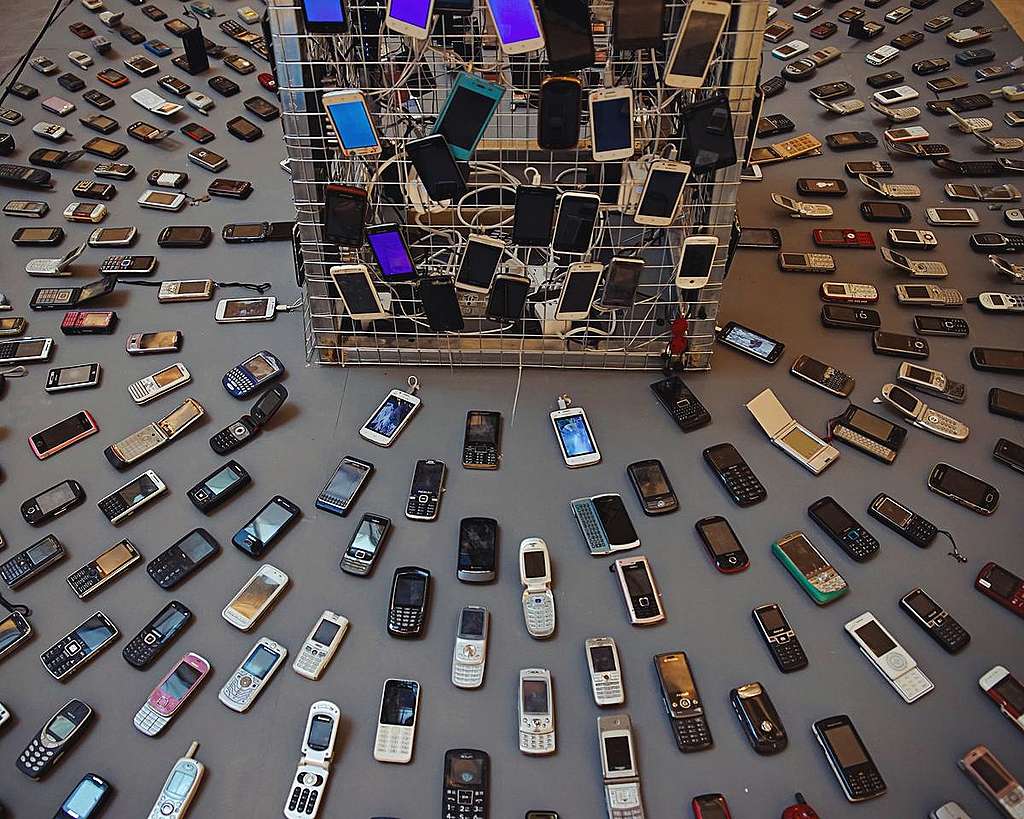Climate breakdown. Plastic pollution. Overfishing. The oceans are facing more threats than ever – and yet, there’s a new baddie in town. A secretive industry is ramping up that would put even more pressure on our oceans: deep sea mining.
The deep sea mining industry is planning to send monster machines to plunder the seabed and extract polymetallic nodules – potato-sized lumps of rocks loaded with metals and minerals. Deep sea mining isn’t happening yet, but the kinds of metals this industry is targeting are used in phones, laptops and batteries.
The deep sea is the largest ecosystem on the planet, but only a tiny fraction of the deep seafloor has been investigated by scientists. We actually know more about the surface of Mars than we do about the bottom of the ocean. The little we do know though, is that these are extreme ecosystems teeming with life…
Incredible creatures from the deep sea
If you were to dive hundreds of meters below the water and take a closer look at hydrothermal vents, where the pressure is crushing and temperatures at the vents can reach 400०C, you might meet the sea pangolin.

To protect its soft body, this curious animal has built a powerful suit of armour with a top layer embedded with iron sulfide – that’s right, this little creature is literally the Iron Man of the seas! And it gets even wilder: researchers believe that the Sea Pangolin doesn’t eat. Instead, it is thought to rely on bacteria living in one large gland that produces the energy it needs to survive.
You might also see the Yeti Crab, which owes its name to its long, hairy arms that make it look like the Abominable Snowman.

Just like the Sea Pangolin, some species of Yeti Crabs have a rather unusual way of feeding themselves: they farm microbes on the hair of their claws to feast on, by waving their arms back and forth rhythmically through the water.
Living in extreme conditions is an everyday challenge. To develop, some Yeti Crab larvae need cooler water, forcing the female out of the safe zone of the hydrothermal vent to breed. As she steps away from the vent, the cold takes its toll on her and she dies after reproducing for the first – and last – time.

Talking about reproduction, have you ever heard about the Ghost Octopus?
To breed, this fascinating creature lays its eggs on dead sponges – that grow on the polymetallic nodules coveted by the industry – before wrapping its whole body around the clutch. It will then wait for several years for its young to hatch, not feeding, slowly waning away until it dies.
But the habitat that these three species rely on to survive is now threatened by deep sea mining.
Deep sea mining is not a solution
As I write these lines, deep sea mining companies are getting ready to send monster machines into their homes. They would cause irreparable, unavoidable damage to fragile and unique ecosystems that we barely understand. It would disrupt countless species that are yet to be discovered. And mining the seabed could disrupt vital carbon stores, which risks making the climate crisis even worse.
We can’t let that happen. To try to justify these huge risks and gain political approval, deep sea miners claim that this ocean destruction is necessary for a high-tech, clean energy future.
Governments and companies are making decisions now that will shape what resources are needed in the future, and where these resources come from. They need to take seriously the urgency of using resources more efficiently, transforming transport systems and moving towards sustainable, circular economies.
We can’t just keep looking for new terrain to plunder. The fact is there are plenty of solutions that exist hat do not involve bulldozing the seafloor.
We need to build a sustainable circular economy, not look for new terrain to plunder
E-waste, a term to describe electronic products that have become obsolete or no longer work, is now the fastest-growing type of waste. It is time to move from our current “take, make, waste” system, to a sustainable circular economy that will minimise waste by reusing and recycling metals and minerals found in electronics – and design gadgets that reduce their use in the first place.

Monster machines ripping up the seabed sounds pretty scary when we’re already facing a climate and nature emergency. But here’s the good news: the deep sea mining industry has not started its destructive activities… yet.
We have a unique chance to stop this new threat in its tracks. Right now, governments are negotiating a Global Ocean Treaty at the UN. Sign the petition to call on governments to create a strong treaty that can open the door to a global network of ocean sanctuaries, and set high standards to protect the global oceans from destructive industries.
Help keep deep sea wildlife safe. Join the movement to #ProtectTheOceans.
Louisa Casson is an oceans campaigner at GPUK.
